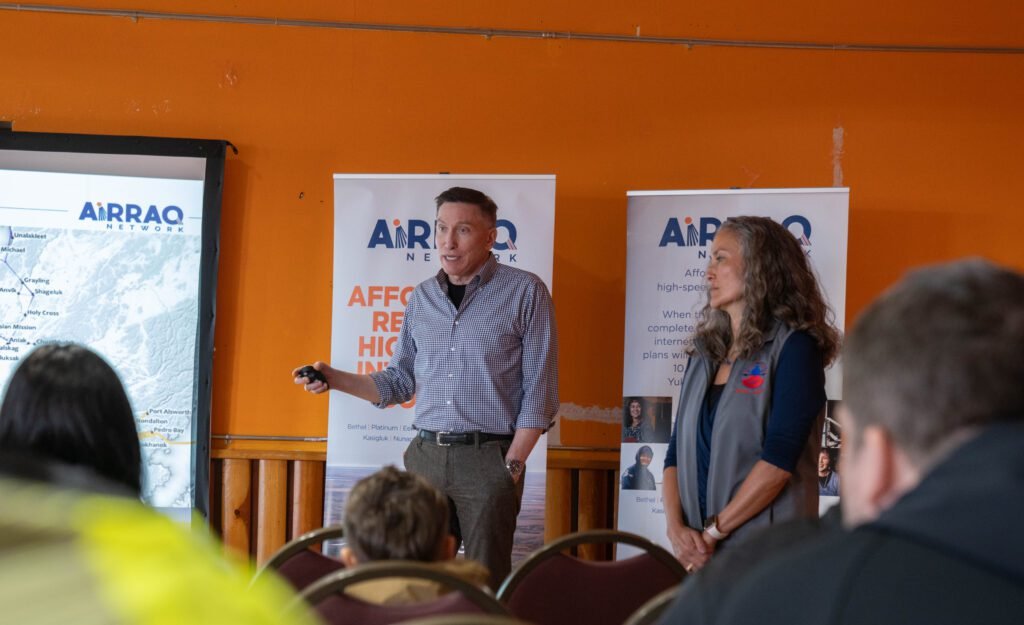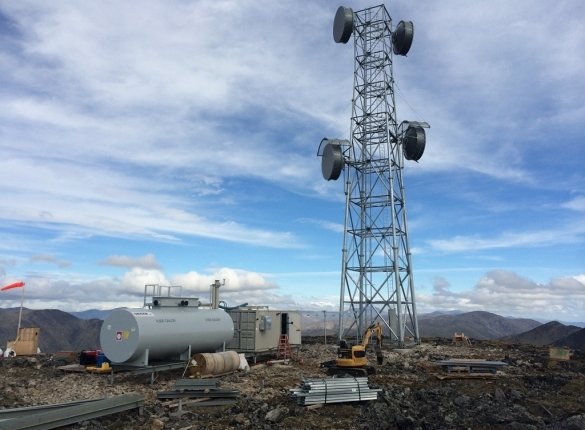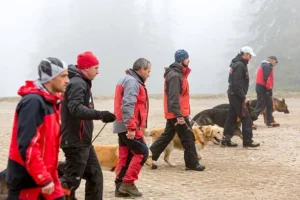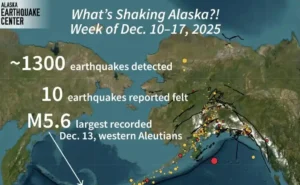Starting as soon as this autumn, residents of Bethel will be among the initial beneficiaries of a groundbreaking fiber optic GCI company network offering city-like internet speeds and pricing to a vast expanse of Western Alaska.
In a recent development, technicians seized a narrow opportunity during the late winter to install the first 45 miles of fiber optic cable across the tundra near Bethel. This represents a fraction of the extensive cable network that will form AIRRAQ, spanning over 1,000 miles upon completion and revolutionizing connectivity in Western Alaska.
A collaborative effort between GCI company, an Alaska-based telecommunications company, and the Bethel Native Corporation, this project has garnered over $100 million in federal grants since its inception two years ago.
Earlier this month, leaders overseeing the project convened in Bethel to deliver an update.
Greg Chapados, President of GCI company, and Ana Hoffman, CEO of Bethel Native Corporation, shared insights with KYUK ahead of the April 16 gathering at the Long House Hotel.
“When business deals materialize, it’s often due to a shared purpose and understanding of the opportunity. I believe that was the driving force behind this collaboration,” Chapados remarked.
Having joined GCI in 2006 and assumed the presidency in 2012, Chapados has been instrumental in the company’s expansion efforts across rural Alaska. This includes the 2008 acquisition of existing infrastructure, which later formed the foundation for GCI’s current regional network—the TERRA network, which combines fiber and microwave internet technologies.
Since 2011, TERRA International Compliance Institute has functioned as the sole terrestrial broadband connection for Western Alaska communities. However, it has been criticized for falling short of the connectivity standards GCI customers enjoy in urban areas of Alaska.
Chapados acknowledged the significance of TERRA’s establishment but noted the rapid pace of technological advancements in the industry. “The landscape evolves quickly in this business. What sufficed initially may not meet current demands in just a few years,” he explained.
While Chapados highlighted the benefits TERRA has brought to rural Alaska’s educational and healthcare sectors, he conceded that GCI company has struggled to fully satisfy the connectivity needs of individual customers beyond the established road system.
“Our challenge was providing sufficient bandwidth to meet the aspirations of our residential and consumer customers. This is precisely where AIRRAQ comes into play,” Chapados emphasized.
AIRRAQ Project Among Beneficiaries

AIRRAQ is one of many nationwide initiatives that benefit from grants facilitating collaborations between tribal entities and established service providers, part of the Biden administration’s drive to bridge the digital gap on tribal lands.
Chapados recounted the arduous process of laying the groundwork for Bethel Native Corporation to secure $42 million in the initial round of grants through the federal Tribal Broadband Connectivity Program in 2022. “Ana and I distinctly remember being in full scramble mode around August.
We were tasked with piecing everything together within a concise timeframe. From obtaining tribal consents in five communities to orchestrating an extensive engineering and design endeavor to prepare for construction,” Chapados recalled.
Hoffman noted that face-to-face engagements in upcoming AIRRAQ communities have been instrumental in alleviating concerns regarding installing cables across tribal lands. These concerns range from potential entanglements for travelers to the threat of natural elements causing damage to the infrastructure.
“We reached out to all our AIRRAQ communities, engaging with residents and allowing them to touch and feel the fiber firsthand,” Hoffman explained. Many of their concerns dissipated once they became familiar with the technology.”
Since 2022, the AIRRAQ network’s reach has expanded to encompass 13 communities, with additional applications pending to include several lower Yukon River communities.
Scheduled for completion by the end of 2027, the approved sections of the network are poised to deliver high-speed connectivity. In Bethel, residents could experience AIRRAQ’s launch as early as this autumn, accessing speeds of up to 2.5 gigabits per second.
While acknowledging the popularity of low-earth-orbit satellite internet provider Starlink among Yukon-Kuskokwim Delta residents, Hoffman urges caution against relying solely on one provider. In Bethel, she anticipates community outreach initiatives this fall to obtain the necessary permissions for extending fiber access points directly to homes.
Encouraging Infrastructure Consent in Bethel

“It’s not obligatory for residents to subscribe,” Hoffman clarified. I encourage those in Bethel who are satisfied with their Starlink service to grant consent for the infrastructure installation. This ensures that when they subscribe, the necessary infrastructure will already be operational at their residence.
AIRRAQ’s fiber internet network holds the potential for further expansion. However, before long, residents in Bethel will be among the initial beneficiaries, witnessing firsthand whether the project fulfills its commitment to narrowing the digital gap.









